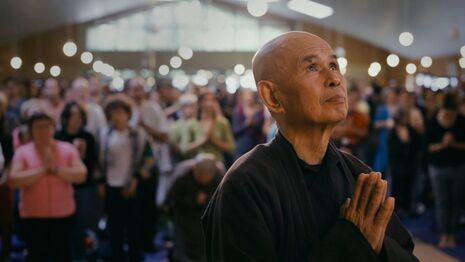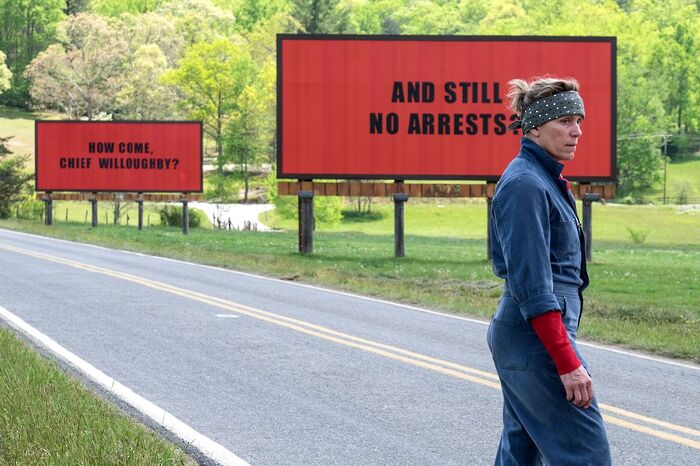Walk With Me review: ‘movement in stillness’
While Elizabeth Huang finds the narration an unnecessary irritant, she finds in this documentary a path to meditation

The first thing to get out of the way, before discussing Max Pugh and Marc James Francis’s otherwise rather good documentary, is Benedict Cumberbatch. The marketing for Walk With Me has focused heavily on his narration, which is intercut throughout the film, accompanied by moody shots of miscellaneous natural phenomena. Unfortunately, Cumberbatch is both underwhelming (his forced gravelly tone fails to deliver the desired gravitas) and incongruous (a Hollywood A-lister reading extracts about giving up one’s worldly possessions? One smells a rather malodorous rat…)
This does much to detract from the other, comparatively more interesting, authentic, and moving half of the documentary, which focuses a delicate eye on the lives of the monks and nuns of Plum Village – a mindfulness centre in the south of France founded by exiled Vietnamese monk, Thich Nhat Hanh.
“A film about watching, as opposed to looking”
Having knocked off one star for Cumberbatch alone, we can get to the good stuff – the documentary itself. In contrast to the big boys of the documentary world, Walk With Me is a pleasingly sedate viewing experience. It eschews the standard expository devices, such as talking heads and dramatically swelling music, in favour of a more detached observational approach.
While this means that the internal perspective remains closed, sometimes frustratingly, to the viewer, it permits a greater focus on the physical presence of the monks in their surroundings as they go about their daily lives, sensitively mirroring the very practice of mindfulness which they have dedicated themselves to.
Capturing its spirit, and drawing the viewer almost imperceptibly into its practice, is perhaps the film’s most impressive achievement. In one scene, a monk explains to a visitor that the electronic bells that go off every fifteen minutes are not alarms, but rather a way of returning oneself to the present moment. When the bells sound, all activity stops.
Remarkably, Walk With Me manages to embody this same rhythm – music and sound intrude gently to invite the viewer to experience their own moment of mindfulness; Cumberbatch’s narration, though lacklustre, opens space to reflect on the principles and ideas which underlie Thich Nhat Hanh’s philosophy. The film is meditative in tone, but in form is itself a self-contained meditation.
Although the film is sometimes excessively laconic – we never have any sense, for example, of why these people have chosen to become monks, or how they feel about it – this is compensated by some excellent visuals, a testament to Francis’s delicate consideration of colour and movement. Still frames of tranquil natural scenes, through which people sometimes pass, beautifully capture the sense of movement in stillness that suffuses the film.
The viewer luxuriates in a series of striking images: a terrapin, emblazoned with a crimson leaf; three children whirling with abandon on a rope swing; an old man joyously watching a line of ants. Walk With Me is a film about watching, as opposed to looking. This is not to say that it is a passive, tedious experience: the film was intensely moving, leaving one with damp eyes at the close.
Walk With Me is a documentary in the proper sense of the word – it is a sincere report and record of what it is to live a meditative life. It presents a thoughtful look at what it means, in today’s fast-paced, consumer society, to take a different approach – to take time out and live more fully in the present. “I have arrived”, declares a t-shirt worn by an American visitor – the film does not offer an explanation, or even a response – it just sits serenely back, and observes
 News / Downing investigates ‘mysterious’ underground burial vault 29 December 2025
News / Downing investigates ‘mysterious’ underground burial vault 29 December 2025 Lifestyle / Ask Auntie Alice29 December 2025
Lifestyle / Ask Auntie Alice29 December 2025 News / Unions protest handling of redundancies at Epidemiology Unit30 December 2025
News / Unions protest handling of redundancies at Epidemiology Unit30 December 2025 Features / ‘Treated like we’re incompetent’: ents officers on college micromanagement30 December 2025
Features / ‘Treated like we’re incompetent’: ents officers on college micromanagement30 December 2025 Science / Astronomical events to look out for over the break29 December 2025
Science / Astronomical events to look out for over the break29 December 2025










